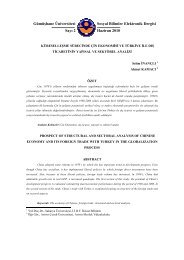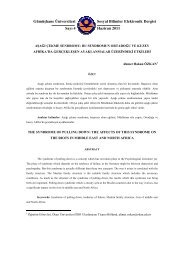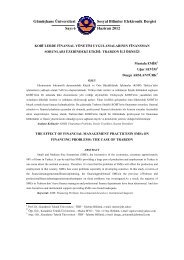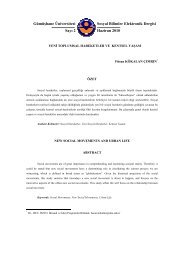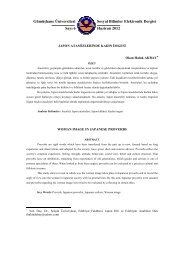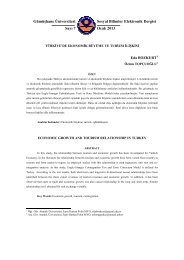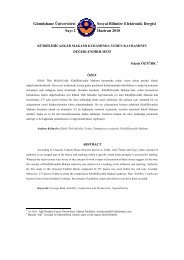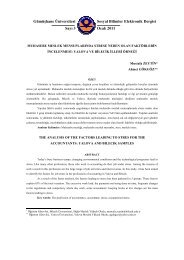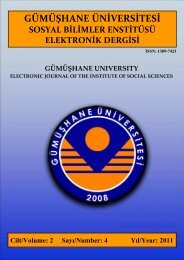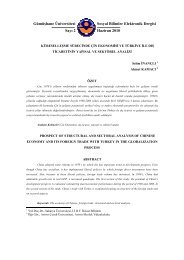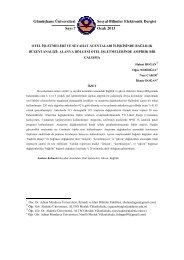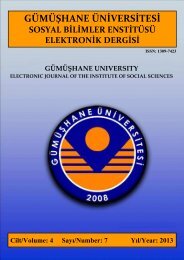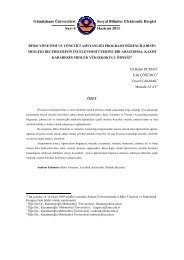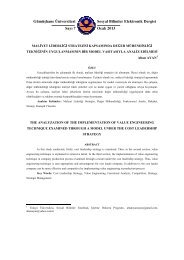S - GÜ SBE Elektronik Dergisi - Gümüşhane Üniversitesi
S - GÜ SBE Elektronik Dergisi - Gümüşhane Üniversitesi
S - GÜ SBE Elektronik Dergisi - Gümüşhane Üniversitesi
You also want an ePaper? Increase the reach of your titles
YUMPU automatically turns print PDFs into web optimized ePapers that Google loves.
Historical Development of Nato Stanag 6001 Language Standards Ekrem SOLAK<br />
and Common European Framework (Cef) and The<br />
Comparison of Their Current Status<br />
STANDARDS<br />
I. HISTORICAL DEVELOPMENT OF NATO STANAG 6001 LANGUAGE<br />
A. Historical Background of Language Studies in Military Context<br />
The history of language teaching in military context which goes back to the World War<br />
II began to be developed scientifically especially by the entry of the United States into World<br />
War II. At that time, the United States Army needed personnel who were fluent in some<br />
languages to work as interpreters, code-room assistants, and translators. The government<br />
entrusted some American Universities to develop foreign language programs for military<br />
personnel. With the participation of fifty five American Universities, the Army Specialized<br />
Training Program (ASTP) was developed in 1942.<br />
The most important characteristics of this program was to use an informant, that is why<br />
it is sometimes known as the “informant method”, since it used a native speaker of the<br />
language. The informant served as a source of phrases and vocabulary and provided sentences<br />
for imitation and memorization which were the fundamentals of the method. There was also a<br />
linguist who did not necessarily know the language, however, was trained to extract basic<br />
structure of the language from the informant. Those courses were intensive programs and<br />
students studied 10 hours a day and 6 days a week.<br />
The Army Specialized Training Program lasted only two years; however, it attracted<br />
considerable attention especially during the World War II. The program could be considered<br />
innovative in terms of the procedures used and the intensity of teaching rather than in terms of<br />
its underlying theory. On the other hand, it inspired several linguists on the value of an<br />
intensive, oral-based approach to the learning of a foreign language. These aspects of the<br />
method contributed to the development of Audio-lingualism which was a combination of<br />
structural linguistic theory, ASTP, contrastive analysis, aural-oral procedures and behaviorist<br />
psychology (Richards & Rodgers, 1997).<br />
1.The Historical Development of the NATO Stanag 6001 Scale<br />
During the 50s, the United States Government needed to specify the language ability of<br />
Government employees, but at that time, there was no standardized system in the academic<br />
37



